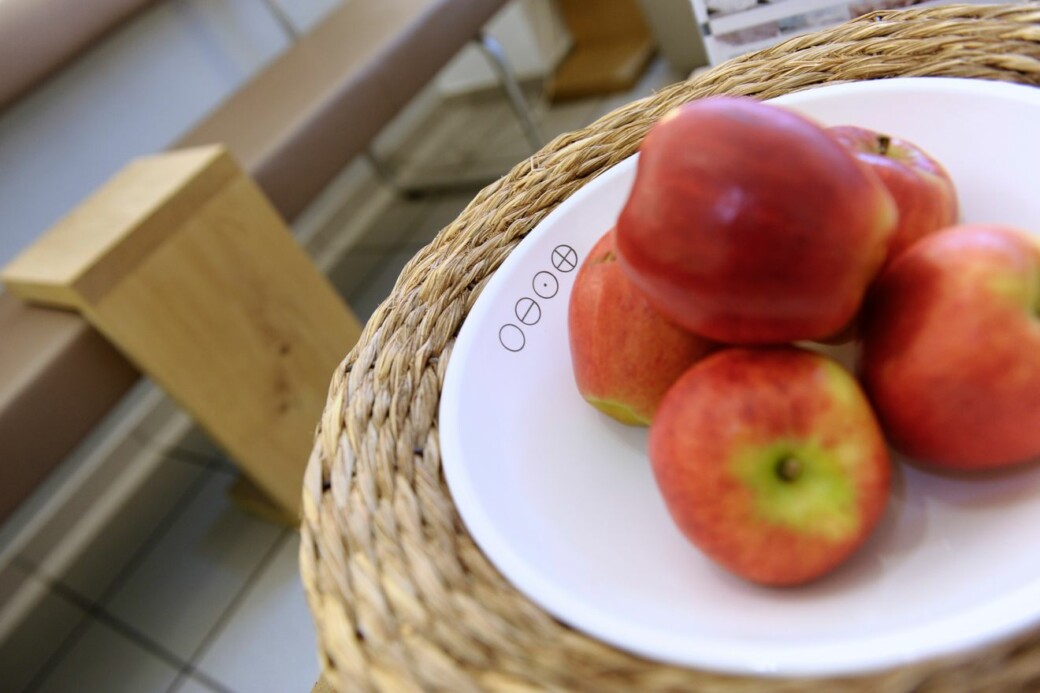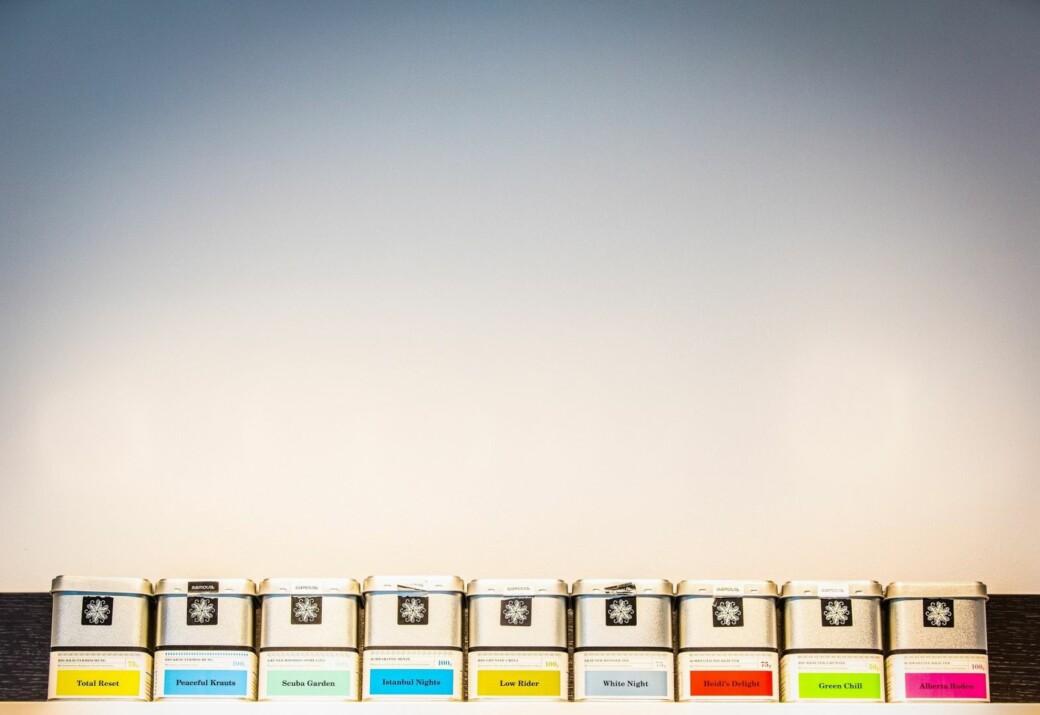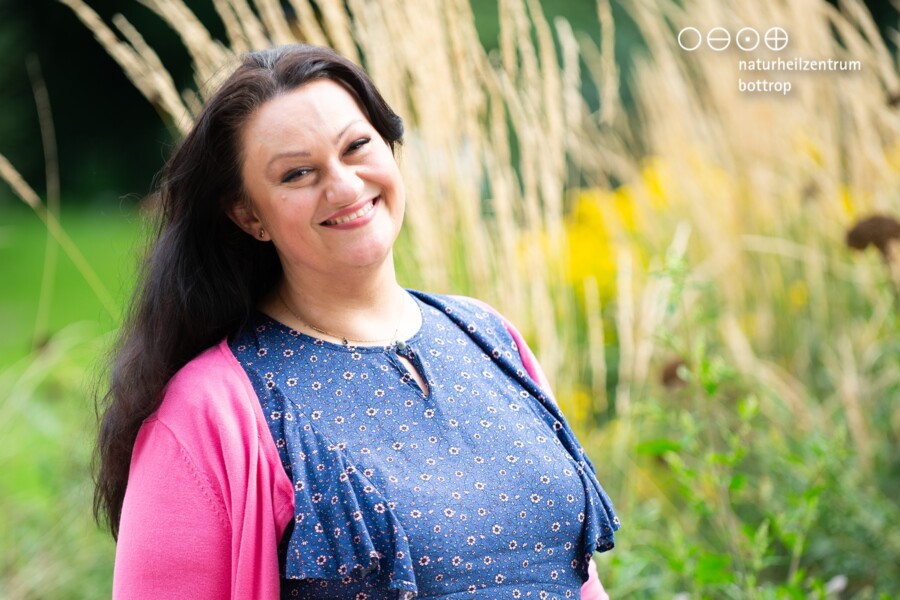Naturheilzentrum Bottrop – a guest post on the subject of fructose and sorbitol intolerances

Aletta Carmanns: sugar-free and nutritional awareness leads to a more positive attitude towards life – including two delicious recipe tips
Aloha! I’m Aletta, a 35-year-old blogger from Düsseldorf, and a social networker on verbalstylistin.de. I blog on topics such as nerdy stuff, web curiosities and social media on the go. As someone who is known mainly for being a technophile, I am particularly pleased to be able to devote myself to a completely different topic today for Naturheilzentrum Bottrop. I have been keeping a secret outside of the digital world: I have a fructose and sorbitol sensitivity.
Food allergies are on the rise
You will definitely know someone in your circle of acquaintances who needs to remove certain things from his/her diet. That’s not surprising because according to a 2015 study by the “Schwenninger” health insurance company. One third of German citizens now suffer from a food sensitivity. You will certainly already be aware of lactose and gluten sensitivity. But what about histamine, fructose and sorbitol sensitivity? I’d like to clarify the latter two points, and chat a bit about my Personal and private experiences.
The diagnosis
Two years ago, I started getting problems at a moment’s notice. Dishes, which I had previously eaten regularly and tolerated well, upset my digestive system. Stomachache, bloating and diarrhea were the result. I could not figure out the reason for this. Sometimes I’d get one symptom, and at different times the others. When the regularity of my complaints increased, I consulted my GP. As he did not know how to help to me, he referred me to a medical specialist – a gastroenterologist, who tested me (by way of breath tests over three mornings) for lactose, fructose and sorbitol. I tested positive for the latter. That meant in plain terms: I had to completely change my diet to a sugar-free one, almost overnight. However, living sugar-free does not mean completely renouncing sweet temptations. On the contrary: through replacing sugar with sweeteners that the body can digest, you may even reduce the diabetes risk despite eating sweet treats. So, a sugar-free diet also has a lot of positive effects.
What does fructose and sorbitol sensitivity actually mean?
There is a distinction between fructose sensitivity and fructose intolerance. An intolerance is a congenital defect where the body is not in a position to deal with fructose at all. A sensitivity, however, is a disorder of the digestive tract, which can occur during the course of your life. To put it simply, the small intestine loses the ability to sort out and process the sugar that is taken into the body as food via the course of digestion. This results in further sugar arriving in the intestine where it begins to generate gases. This can be very painful and cause diarrhea, depending on quantity. But there is still a small ray of hope: even People with fructose sensitivity can handle about 5g of fructose per day. This provides us with a small nutritional buffer, which I will go into later in more detail.

A little sugar customer
Fructose is the specialist term for fruit sugar. As the name suggests, fructose is mainly present in fruit. The easiest thing to do would be to eliminate fruit from your diet plan, but unfortunately the reality is a bit more complicated – because fructose is also an ingredient of most common sweeteners. We start off with normal household sugar – whether it is refined or unrefined, white or brown, raw cane sugar, or other variations, the fact is that household sugar consists of 50% fructose and 50% glucose. The good news: glucose is our friend, as all sugars are processed into glucose in our bodies. Fructose, however, is the downfall of those who have a sensitivity toward it. Other natural sweeteners like honey or agave syrup are also, unfortunately, largely comprised of fructose and, thus have to be left out.
What actually is sorbitol?
Sorbitol is a sugar alcohol. These are generally difficult to digest, but successfully pass through healthy digestive tracts. People with sensitivities, in contrast, can react to even small quantities with the afore-mentioned side effects. Sugar alcohols are, however, often used in the food industry as a sweetener. And: sorbitol naturally occurs in many fruits. Apples, pears, grapes and plums, for example, are taboo.
Acceptable sweeteners
There are sweeteners that do not do us any harm. Glucose may be safely used and is even suitable for baking. Sweeteners such as acesulfame k, aspartame or stevia also work. However, they have a very high sweetening power and should only be consumed, if at all, in moderation. Otherwise, your own perception of the sweetness level will spiral upward unnecessarily, which will result in increased cravings. And do not fear: switching to these sweeteners will not cost the earth. Many supermarkets and drugstores now offer glucose. I myself also use it for the most part. And another tip from me: you can use rice syrup instead of honey. This has the same consistency and is suitable for e.g., refining salad dressings. I always have a packet of stevia sweetener tablets when I’m on the go. Spontaneous café visits can therefore also be sweetened.
Greater awareness when you go shopping
Have you ever made the effort to study the ingredients list of every article in your shopping cart when you visit a supermarket? As a Person with a fructose sensitivity, this will now be your new favorite preoccupation. You will be amazed at which industrially-produced foodstuffs contain sugar. However, a look at the ingredients list is worthwhile for everyone: the fewer additives a food has, the healthier it is, and the lower the probability of developing a sensitivity toward it. Therefore, when you next, e.g., fancy a meat salad, get the product without added sugar.

Get some competent advice
Before you get started and completely eliminate sugar from the menu, I advise that you discuss nutritional changes with an expert. This is because everyone has different needs and there isn’t a “one size fits all” diet plan for everyone. There is only one rule: we’re all individuals. After my diagnosis, my entire Personal nutritional and diet plan was created under the control of my nutritional consultant. The two Bottrop-based naturopaths Farid Zitoun and Christian Rüger from Naturheilzentrum have, incidentally, devoted themselves to the subject of food allergies and nutritional awareness. There is also the possibility of supporting digestion via dietary supplements. Make sure you get thorough advice on this matter because not every product is equally suitable for everyone.
Test, test, test
We have a wonderful saying during carnival time in the Rhineland area: “every Jeck (carnival reveler) is different” – this also applies to those with a fructose and sorbitol sensitivity. Everyone has a Personal tolerance limit, which they must determine for themselves. It took me about three months in the accompaniment of a nutritional consultant. To do this, I kept a daily food diary and evaluated my meals according to the “traffic light principle”: green for “unproblematic enjoyment”, yellow for “mostly digestible in moderation” and red for “I cannot tolerate this”. My Personal “table of foods I can eat” came out of this over the course of time. I pass this list on to friends and relatives, as needed, so they don’t have problems cooking for me. During the first 14 days, however, I strictly adhered to a fructose-free diet and only consumed foods that really were harmless. In my case they were, for example, potatoes, pasta, eggs, meat, dairy products, and easily digestible types of vegetables that would not lead to bloating. It is very important to note that these foods make up my Personal emergency plan. You can always have occasional bad days, and thanks to this list, I know what I can easily eat at any time. This emergency plan is especially relevant for us girls: most of us tend to be blessed with a particularly diva-like gut during menstruation…
It comes down to the packaging
Over time, I have tested more and more sorbitol-free and low-fructose types of fruit and vegetables that are difficult to digest. Important: test only one type within the space of three days, so intolerances/sensitivities can be clearly assigned and not falsely identified. The aforementioned 5g sugar-limit also comes into play here: the sugar, which you consumed, added up during the course of the day. That means, in plain terms, that rules of thumb such as “I can take 5 cherries” are not much use if you have previously eaten a yogurt with fruit in it.
A little tip: pack the sugar into fat! I can rarely tolerate pure fruit, not even the low-fructose varieties. But things are quite different if the fruit is mixed with yogurt or in a cake or muffin. Over the course of time, my “table of foods I can eat” has grown enormously, and my menu is once again as varied as it was before the diagnosis.
Products especially for us
Meanwhile, the food industry has also discovered us as a target group. The Frusano manufacturer, for example, offers fructose and sorbitol-free ketchup because you won’t find sugarless ketchup in any supermarket. Breakfast has also been “rescued” thanks to Frusano’s fruit spread. The drugstore chain, DM, has now added selected Frusano products to their assortment. Muesli is also always a problematic matter: everything in the supermarket is sweetened, the base mixtures are bland, and I have always resisted mixing together my muesli from several different bags. There are now various muesli providers on the Internet, where you can have your own mixture produced. And the choice of drinks is easy: those (like me) who never want to see tea and water again, can e.g., have a spritzer prepared with fructose-free syrup or refresh themselves with a lemonade from the zero-product rows which only contain (artificial) sweeteners. I treat myself to them in moderation, every now and then. The best solution is, however, to simply make lemonade or fruit syrup yourself, and spice the whole thing up with fresh mint and a citrus slice.

The end of the convenience foods
Of course, there are some things that I have had to completely give up. The ice cream parlor in summer or confectioner’s treats are taboo. But if I ever really craved something sweet, I found that this craving diminished all by itself after undergoing 14 days of sugar withdrawal. I then go to my “sweetener friends” in the kitchen and bake my own cake or prepare my own ice cream. If others learn of my food sensitivities and look at me with pity, I can now say with full conviction: “fructose and sorbitol sensitivity is not the end of the quality of life. It is only the end of the convenience foods.”
What about you? Have you had similar experiences? Would you like to tell us your favorite recipe or have you discovered a product that works particularly well for you?
2 recipe tips (my favorite recipes) for when you want to enjoy a spontaneous snack
Berry ice cream without an ice cream maker
150 g frozen berries, e.g. raspberries
100 g glucose
200 ml cream, chilled (or lactose-free substitute)
Some lemon juice
Put the cream and glucose in a big mixing bowl and stir until the glucose dissolves. Mix in the lemon juice. Add the frozen fruit and pulse with a blender. The frozen and chilled ingredients will ensure that this directly results in a mass of ice cream, which can be eaten immediately.
Basic muffin recipe (yields 12 muffins)
200g flour
200g glucose
4 eggs
50ml milk (or lactose-free substitute)
1 packet baking powder
1 packet vanilla sugar (if you have a strong sensitivity, only add vanilla to the mixture or leave it out completely)
Put all the ingredients in a big mixing bowl and mix for three minutes with an electric mixer on its highest speed. Then pour into a muffin tray lined with paper cases. If you like, you can add some low-fructose fruit to the batter. I recommend blueberry or rhubarb.
Bake on the middle shelf of a preheated oven at 200 degrees (top /bottom heat) for about 20 minutes, until the muffins are golden brown. To be on the safe side, test with a toothpick to see if the batter is still raw.








Netiquette for respectful communication
the nabo team invites you to exchange your experiences, contributions and opinions on the blog by using the comment function. this exchange should be free, open and friendly. please take care to write fairly and to stay on topic. even if you do not share the opinions expressed in others’ comments. the possibility to write comments on the blog posts is exclusively related to the topics treated within said posts. we would be glad to answer all of your specific questions related to therapies or descriptions of individual maladies or read your remarks about naturheilzentrum bottrop : simply come see us or call or write us Personally.